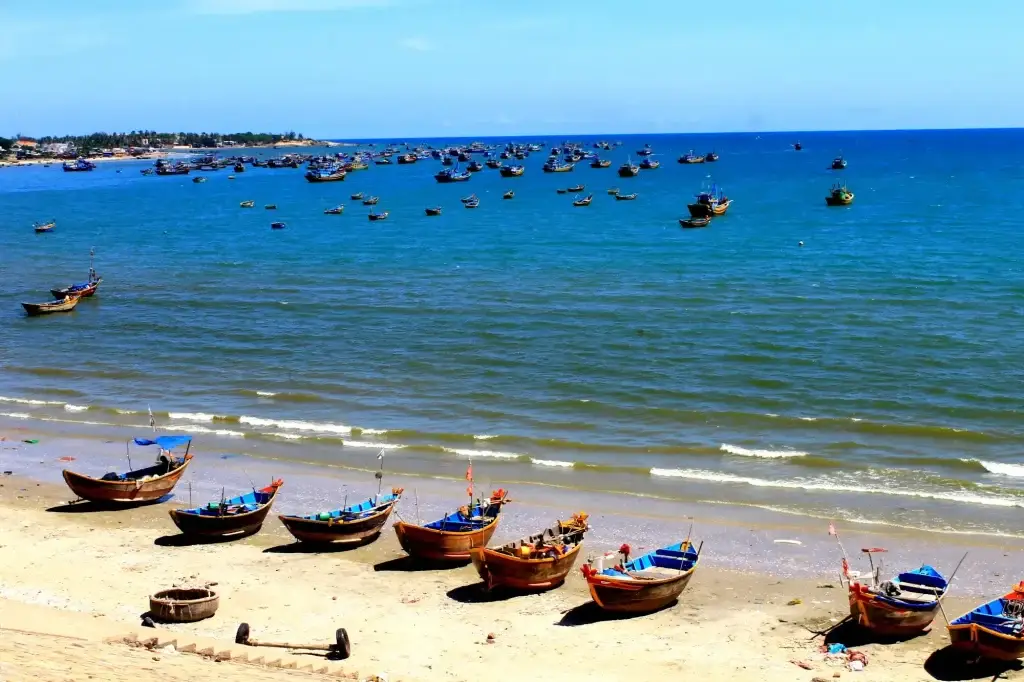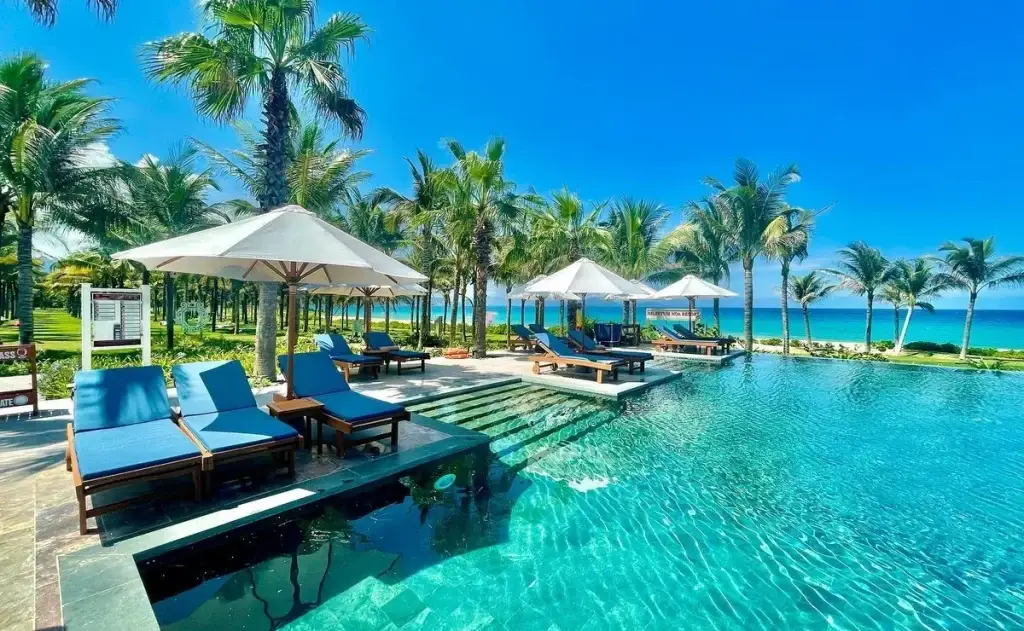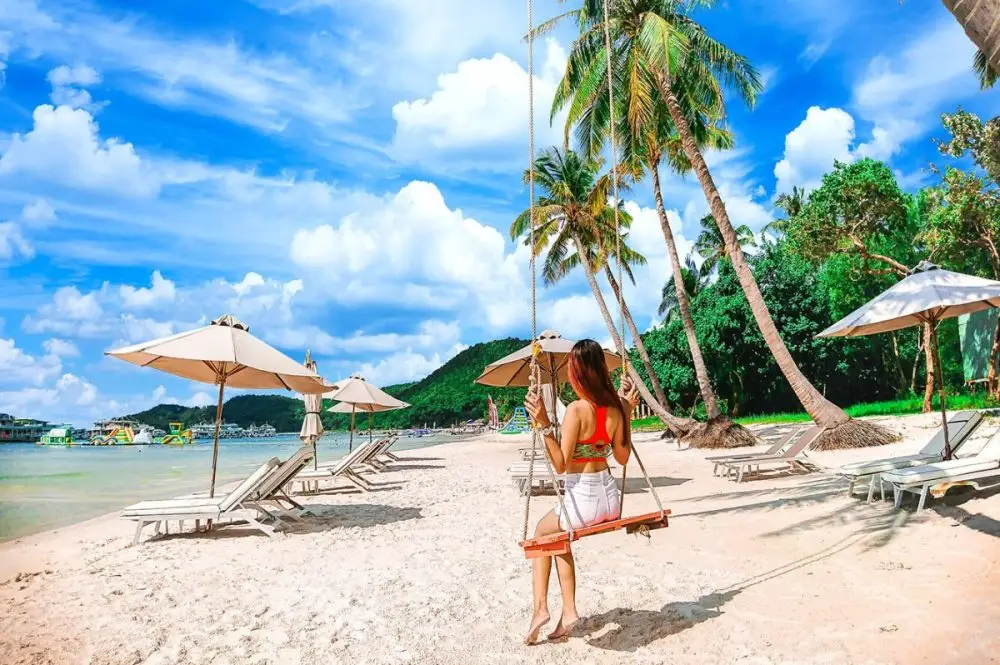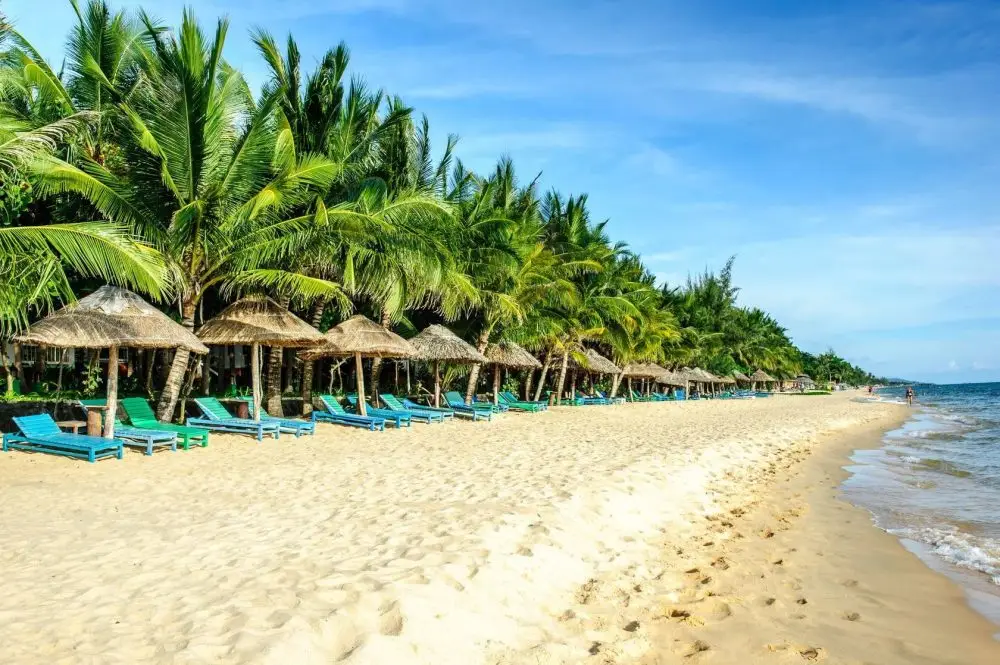Vietnam’s resorts form a multi-layered landscape of experiences. Beaches, thermal zones, cultural centres, island archipelagos, rice valleys and mountain terraces all fit into one trip. The country offers not just holidays, but a palette of climates and sensations: from tropical humidity to invigorating coolness, from palm trees to pine forests.

Nha Trang: the dynamics and rhythm of a maritime city
Vietnam’s resorts on the southern strip of the coast form the epicentre of the year-round tourist flow. Nha Trang is the main hub. The city is building an infrastructure capable of accommodating both family tourists and active travellers. The beaches stretch along the bay for 6 km, the seafront is landscaped, cafes work in the rhythm of day and night. The region offers more than 50 SPA complexes with mineral water and mud baths. Boat trips to Hon Mun, Hon Tam and Bamboo Islands are a must on the programme. In the evening, markets, karaoke bars and jazz scenes are active.
Phantiet and Mui Ne: kiting, dunes, solitude
 Beaches in the Mui Ne area line holidays along a strip of white sand. Vietnam resorts in this area offer the format “villa + sea”. Without crowds, without noise, with a constant sea breeze. The complex has become a point of attraction for kiters and surfers. Kite surfing schools are open from November to March. The dunes – red and white – form a landscape reminiscent of a desert rather than a beach. Restaurants along the coast operate a morning catch system: fish, crabs, mussels, squid are all caught within 1-2 kilometres of the shore. The tourist does not order a menu – he chooses an ice tray.
Beaches in the Mui Ne area line holidays along a strip of white sand. Vietnam resorts in this area offer the format “villa + sea”. Without crowds, without noise, with a constant sea breeze. The complex has become a point of attraction for kiters and surfers. Kite surfing schools are open from November to March. The dunes – red and white – form a landscape reminiscent of a desert rather than a beach. Restaurants along the coast operate a morning catch system: fish, crabs, mussels, squid are all caught within 1-2 kilometres of the shore. The tourist does not order a menu – he chooses an ice tray.
Da Nang: balance between urbanism and nature
Da Nang is building a resort format at the intersection of metropolis and tranquillity. Vietnam resorts in the central part of the country are developing the concept of “urban beach”. The city provides full service: international airport, hospitals, large shopping centres. At the same time, the beaches remain clean, crowded and safe. The sandy line stretches from Marble Mountain to Mai Khe beach. Hotels are located behind a strip of palm trees, and the beaches remain public. In the evening, bridges are illuminated, fountain shows are held on the river and the streets are transformed into a night market.
Hoi An: immersing yourself in the structure of time
Hoi An – the city has been turned into an open-air museum. Resorts in Vietnam do not duplicate this format anywhere else. The architecture combines Chinese pagodas, French colonial houses and Vietnamese craft shops. Hotels are set up inside historical buildings. Tourists do not go for the beach, but for immersion in the cultural code. Cycling, tailor-made clothes, calligraphy classes, lantern festivals – everything is included in the holiday plan without a schedule.
Sapa: resort above the clouds
Vietnam’s resorts in the northern zone move away from the maritime theme and offer a mountainous vertical. Sapa rises to an altitude of 1,500 metres above sea level. The view of terraced fields, mountain ranges and cloud streams creates a feeling of steaming. Tourist stay in gesthouses of Hmong and Dzao tribes. The walks are on routes without tarmac but with tea points and views of waterfalls. The complex is open all year round, but the peak season starts in September when the rice fields are golden. Thermal springs and herbal steam baths add to the alpine cleansing effect.
Phu Quoc: a reboot at one of the best resorts in Vietnam
Phu Quoc is the largest island of the country. Villas are located at a distance, the roads are not busy, the tourist wakes up to the sound of waves. The beaches of Bai Sao, Long Beach, Ong Lang – each offers a different atmosphere. There are pepper farms in the north of the island and pearl plantations in the south. The island operates on a ‘switch off’ principle: no skyscrapers, limited transport and minimalised advertising. Local restaurants operate at the level of author’s cuisine.
Ba Wang and the Northern Thermae: treatment and prevention
Vietnam’s resorts are building a health tourism destination based on a combination of natural springs and traditional medicine. Ba Vang is a unique thermal resort where mineral waters are combined with eastern healing methods. The centres offer acupuncture, acupuncture, acupuncture, wormwood warming, steam inhalation with local herbs. The water temperature ranges from 45-52°C and its composition is calcium, magnesium and sulphur. The resort operates all year round, while minimising population density and focusing on recovery tourism. The availability of treatments, food without flavour enhancers, and quiet rooms are part of the wellness strategy.
Ninh Binh: a combination of nature and bodily resetting
The mountainous landscape of Ninh Binh provides not only panoramas and trails, but also springs with rare water composition. Vietnam resorts in this area organise complexes without high-rise buildings. Accommodation is placed in huts near the water or on terraces of rice fields. Wellness centres introduce the concept of digital detox: gadgets are switched off, signals are blocked, the schedule includes breathing practices and slow transitions between procedures. Meals are exclusively locally sourced. Meals are served on stone slabs, thermal vats are heated with charcoal. The doctor does not prescribe, but accompanies the client in the rhythm of bodily recovery.
Hue: gastronomy as a cultural code
Hue turns travelling into an immersion into the gastronomic past. The former capital of the emperors moulds its cuisine on the recipes of the dynasties. Dishes are served in small portions but with precise geometry. Dinner turns into a ceremony. Tourist participate in gastro-tours to the homes of locals. The chefs are trained to make banh cuon pancakes, bun bo soups, shrimp rolls. Markets become a training ground: smells, products, spells of the sellers.
Condao: an island without time
Condao is an archipelago consisting of 16 islands. Vietnam resorts in this zone destroy the notion of traditional holidays. There are no chain hotels, no advertising billboards, no queues. Accommodation is organised in eco-lodges overlooking the sea. The main format is nature observation. Turtles lay eggs on the beach, monkeys hide in the mangroves, parrot fish swim in the reefs. Centres offer sunrise yoga practices, evening fire ceremonies and talks with mentors.
Features of Vietnam resorts
Complexes build tourist infrastructure according to the principle of depth, not latitude. Beaches operate without fences. Nature is preserved rather than stylised. Restaurants are not decorated in European style – but served on bamboo stands overlooking a rice paddy. The tourist does not consume – he enters the environment. The state implements eco-programmes, supports regional business development, and restricts mass construction. Resorts adapt to this course: they reduce noise pollution, replace transport with electric cars, and introduce programmes for bio-treatment of water.
Conclusion
 Vietnam’s resorts are not about entertainment, but balance. Here they provide silence, nature, food, air, movement. The country offers holidays as a return to oneself. If the route starts in the chaos of cities, it can end on the shore, where the surf sounds instead of words.
Vietnam’s resorts are not about entertainment, but balance. Here they provide silence, nature, food, air, movement. The country offers holidays as a return to oneself. If the route starts in the chaos of cities, it can end on the shore, where the surf sounds instead of words.

 en
en  ru
ru  ar
ar  de
de  es
es  fr
fr  nl
nl  hi
hi  it
it  pt
pt  el
el 












